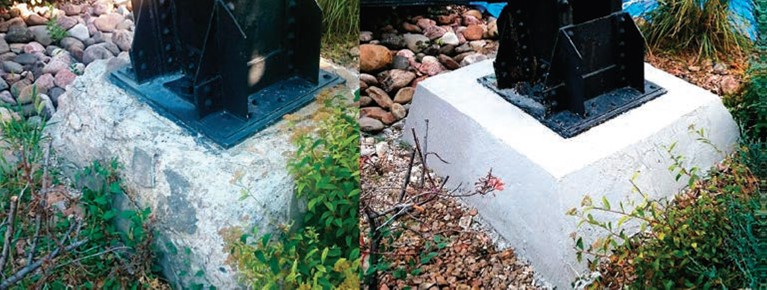One of the challenges building and facility managers face on an almost daily basis is how to keep the key components of their aging facilities operating economically. Often replacing a component isn’t possible due to the way the building is constructed around the part in question. Also, often the timeframe to get a new one isn’t practical. Even when a new component is available, once you factor in cost, you must decide if the replacement is your best option.
Advanced-polymer composite rebuilding and preservation systems often provide alternatives to replacement or costly conventional repair methods. These types of systems have been used for many years by the military and nuclear power industry; however, few facility and commercial property managers realize they are available. These options are often “green,” because they provide the facility manager the ability to repair rather than replace a piece of equipment, thereby keeping material out of a landfill.
One recent project where these alternatives materials came into play was a historic and iconic 100-plus-year-old water tower, which was experiencing issues as a result of severe deterioration of the concrete footers supporting it. Over the decades, numerous patching and coating projects were done using various concrete compounds. While in the short term each of these fixes temporarily made the bases look better, due to the fact concrete shrinks as it cures, the repairs eventually cracked, flaked and failed. Also, the new concrete and cementitious materials used didn’t bond well to the older cured concrete, which further contributed to the degradation of the concrete footers.

As part of a large-scale restoration effort, the owner of the water tower sought new technologies and options. Based on research, the owner elected to use an advanced polymer-based material that not only gave the appearance of concrete but also delivered a bond strength to the existing concrete material that strengthened and protected it from further decay. Additionally, the repair material selected would bond to the steel bases that sit on the concrete, thereby stopping water from entering the existing gap between the steel and concrete, which in the past had caused severe corrosion to the steel as well as damage to the concrete as a result of freeze-thaw cycling. While the material selected was more expensive than conventional modified concrete patching material, the owner realized that short-term fixes yield short-term results and elected to invest in a solution that is designed to last.
Written by:
John McDonough, FMP.
District Sales Manager, Denver.
As appeared in the January 2017 issue of CREJ’s Property Management Quarterly.




